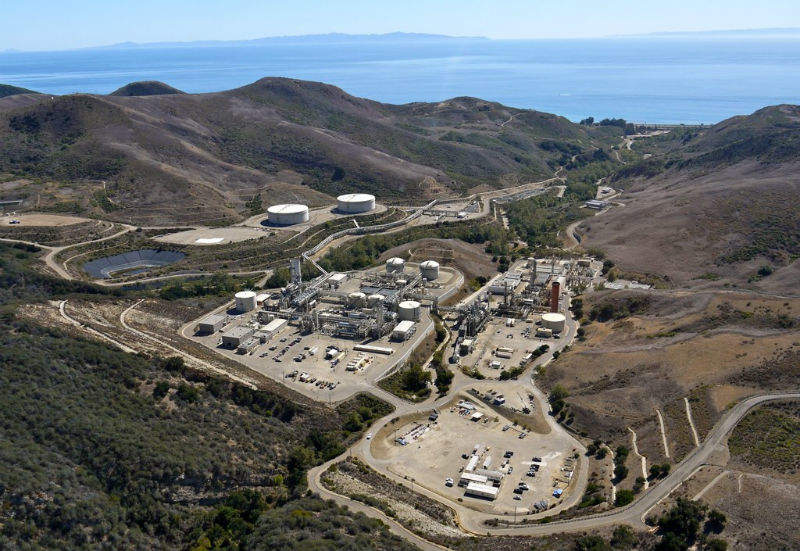
Multinational oil and gas giant ExxonMobil plans to resume production on three platforms off the Santa Barbara Coast in California, US. The company will use up to 70 trucks a day on Central Coast roads as a temporary measure to transport crude oil.
The company had stopped producing on its offshore platforms, as well as at its onshore Las Flores Canyon (LFC) facility, after the onshore Plains All American pipeline ruptured in 2015 when 142,800 gallons of oil spilled out over the Refugio State Beach coast.
Due to the pipeline rupture, ExxonMobil had no way to transport crude oil to US markets. While the company has applied for a replacement transmission pipeline, in the meantime, it has applied for permits from Santa Barbara County to resume production and distribute crude using trucks.
If approved, ExxonMobil would transport crude oil from the Las Flores Canyon facility via Highway 101 to the Santa Maria Terminal in Santa Barbara County, or via Highway 166 to the Plains Pentland Terminal in Kern County. This would require trucks to transport oil 24 hours a day, seven days a week.
ExxonMobil said in its ‘SYU LFC Interim Trucking Description’ report: “The interim trucking includes the transportation of product via trucks to one of the two designated facilities. Each truck can transport approximately 160 barrels of product. After unloading at one of the two designated facilities, the trucks may return directly back to LFC to reload or may be reassigned to other operations.
“ExxonMobil will take all prudent steps to mitigate potential impacts posed by the interim trucking.”
How well do you really know your competitors?
Access the most comprehensive Company Profiles on the market, powered by GlobalData. Save hours of research. Gain competitive edge.

Thank you!
Your download email will arrive shortly
Not ready to buy yet? Download a free sample
We are confident about the unique quality of our Company Profiles. However, we want you to make the most beneficial decision for your business, so we offer a free sample that you can download by submitting the below form
By GlobalDataAmong other measures the company proposed to “restrict all site development and operational activity to existing disturbed areas”, to install containment berms if required to “prevent the unlikely spread of oil or fuels during loading [to] minimise air emissions to the maximum extent feasible and practical.”
ExxonMobil continues to hold leases for the Hondo, Harmony and Heritage offshore platforms that, according to the company, have significant remaining reserves. It adds that the project will not only boost supply in oil and gas, but create jobs and tax revenue for the Central Coast economy.
Opponents to the project have responded that using trucks filled with highly flammable crude poses an unacceptable threat to residents.
The Center for Biological Diversity oceans legal director Kristen Monsell said: “These huge trucks full of highly flammable crude would pose an unacceptable threat on Santa Barbara’s coastal highways. The planning commission should reject this dangerous proposal. It’s unfair for county residents to shoulder this risk just so ExxonMobil can bring its decrepit drilling platforms back online.”
Citizens for Responsible Oil & Gas executive director Kimberly Rivers said: “This plan will have a significant impact on neighbourhood and regional air quality. The many risks associated with this plan are not worth it and our region needs to begin shifting our economy and land use away from fossil fuel-based sectors.”
Santa Barbara County officials will host a public hearing today and prepare a supplement to the environmental impact report. The Santa Barbara County Board of Supervisors will decide whether to grant the permit in around one year’s time.







